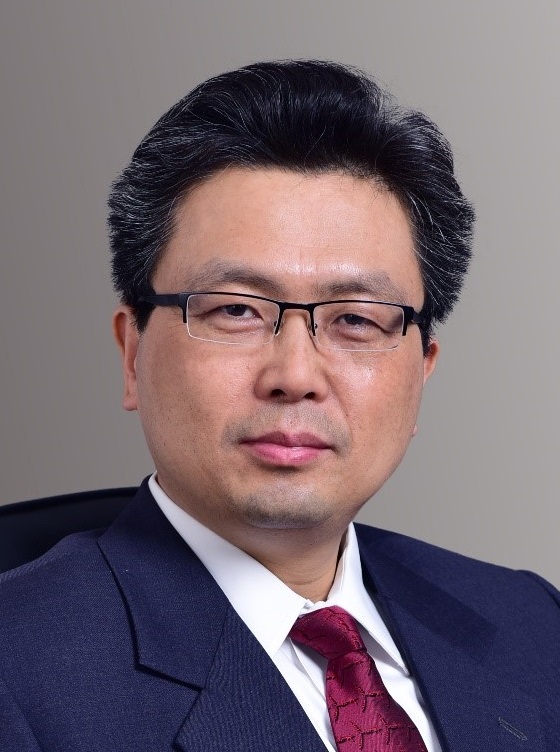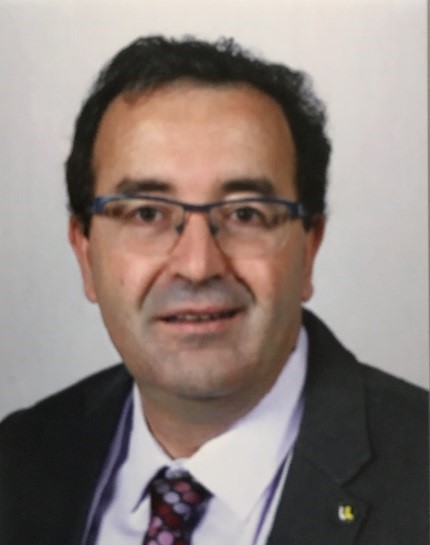
Ronghai Qu
Huazhong University of Science & Technology,
Wuhan, China
Hair-pin Winding Permanent Magnet Machines
Abstract
The rectangular wire winding AC electrical machine has drawn extensive attention due to their high slot fill factor, good heat dissipation, strong rigidity and short end-windings, which have been employed for some traction application so as to enhance torque density, improve efficiency, decrease vibration and weaken noise, etc. In this tutorial, based on the complex process craft and the electromagnetic performance, a comprehensive and systematical overview on the rectangular wire windings AC electrical machine is introduced. According to the process craft, the different type of the rectangular wire windings, the different inserting direction of the rectangular wire windings and the insulation structure have been compared and analyzed. Furthermore, the detailed rectangular wire windings connection is researched and the general design guideline has been concluded. Especially, the performance of rectangular wire windings AC machine has been presented, with emphasis on the measure of improving the bigger AC copper losses at the high speed condition due to the distinguished proximity and skin effects. Finally, the future trend of the rectangular wire windings AC electrical machine is prospected.
Keywords: High power density machine, flux modulation machine, Novel machines and their drive and control.
Biography
Ronghai Qu, Fellow IEEE, Fellow of China Electrotechnical Society, received his B.E. and M.S. degrees from Tsinghua University, Beijing, China, in 1993 and 1996, respectively, and the Ph.D. degree in electrical engineering from University of Wisconsin-Madison in 2002. He had been with the General Electric (GE) Global Research Center, Niskayuna, NY as a Senior Electrical Engineer with the Electrical Machines and Drives Laboratory from 2003 to 2010. He was the recipient of 11 GE GRC awards including EPST Technical Achievement Award, Outstanding Teamwork and Management Award. In 2010 he joined Huazhong University of Science & Technology, Wuhan, China. He is currently director of State and Province Joint Engineering Research Center of Novel Electrical Machines, and director of Center for Advanced Electrical Machines and Drives (CAEMD). From 2012 to 2016, he served as deputy dean of school of Electrical & Electronic Engineering. He is currently a member of ICEM NPO AdCom and the chair of IEEE Industry Application Society (IAS) Wuhan Chapter. His research interests include Design and Drive of Electrical Machines. He has published over 400 technical papers including 14 IEEE award papers and holds over 170 patents. Dr. Qu is also a winner of several other awards including 2020 Science and Technology Invention Award (1st prize) from China Electrotechnical Society, the 7th Nagamori Awards from Nagamori Foundation, Japan, 2021, and 2 gold Medals from the 47th Exhibition of Inventions of Geneva, 2019, the 12th Innovation and Entrepreneurial Figure Award, China Association of Inventions,2022. High power density machine, flux modulation machine, Novel machines and their drive and control.

Noureddine TAKORABET
Université de Lorraine,
France
About Fast and Easy Modelling for the Design of Electrical Machines
Abstract
The modelling of electrical machines has undergone considerable development in recent decades. The emergence of numerical methods such as the finite element method has contributed to the development of tools for the design and modelling of electrical machines. This may have the effect of reducing the knowledge of basic physics and design approaches which may be prejudicial to the general know-how on the design of electrical machines. The recovery of a design approach prior to optimization is important to associate a physical meaning and technological expertise to the results of a numerical optimization. This tutorial aims to review the main design guidelines associated with a modelling approach that allows to obtain a pre-design that can be used in a final numerical design. A connection with other physics such as heat transfer or mechanics is essential to ensure the feasibility of the designed machine. User friendly or free tools can then be employed to implement the analytical sizing by a more accurate finite element computation. An example of sizing a permanent magnet and/or Induction machine for electric vehicle is used to support this approach.
Keywords: Electrical machines, Analytical models, winding design, finite element method
Biography
Presently working as Professor of Electrical Engineering at Université de Lorraine, France, Prof. Noureddine TAKORABET is graduated as Engineer in Ecole Nationale Polytechnique of Algiers (Algeria). He received Master of Science from Université Henri Poincaré (Nancy-France) and PhD from Institut National Polytechnique de Lorraine in 1996 (Nancy-France). His main teaching activities deal with electrical machines, electromagnetics, numerical simulation and mathematics. He advised more than 20 PhD students and published more than 80 papers in international journals and more than 150 conference papers, and some patents in collaborations with industrial partners. He led many national projects and involved in European projects H2020 (https://www.imothep-project.eu/) about more electric aircrafts. Actually, he is Director of the research center GREEN: Group of Research in Electrical Engineering of Nancy (20 Prof. and Ass. Prof) (https://green.univ-lorraine.fr/). He is the head of international laboratory: Electrical Engineering Thai-French Research center in collaboration with King Mongkut’s University of Technology North Bangkok (https://ee-tfrc.com/). In 2019 he is chair-organizer of the 19th International Symposium on Electromagnetic Fields in Mechatronics, Electrical and Electronic Engineering ISEF2019 (https://isef2019.sciencesconf.org/). Currently, He is a member of ICEM NPO AdCom and member of ISEF Steering Committee.

Justus Voigt, M.Sc.
dSPACE GmbH
(HQ in Paderborn, Germany)
Real-Time Electric Drive Simulation Approaches and Testing and Validation of Inverter ECUs on High Voltage Level
Abstract
Developing and testing electric motor control applications requires very high precision and correspondingly high sample rates in the simulation environment. Latest motor concepts, high-speed power electronics and advanced position sensors require a platform that operates in nanosecond step size.
dSPACE has more than 30 years of experience in the real-time simulation business and supplies almost all automotive OEMs and Tier1s with simulation and validation tools. This presentation shall cover both the hardware to fulfil hard real-time requirements even for complex models as well the motor models themselves and the according software tools.
Besides signal-based testing, power hardware-in-the-loop is an approach for ECU testing on power level by emulation of batteries and electrical machines. This approach avoids real rotating parts and therefore is an innovative alternative to using a common dyno test bench.
Goal of the presentation is to give an overview of high-performant PHIL setups consisting of extendible power electronic modules and a sophisticated control unit. The presentation describes the three main components a PHIL test bench consists of:
- Real-time models of battery and machine, which calculate the electrical behavior of the investigated battery and machine in real-time depending on the DUT inverter’s switching behavior,
- a control unit, which controls the power electronic devices, so that the same load currents occur as in the real-world dynamometer test bench,
- and power electronic devices, which adjust the desired load currents.
Practical examples are given to illustrate the use cases.
Keywords: Electric Drive Simulation, Real-Time Simulation, Electric Load Emulation, Motor Emulation, FPGA, Power HIL, PHIL, High Voltage Testing, Machine Emulation, Battery Emulation, Drive Inverter
Biography
Justus Voigt is presently working as Technical Sales Engineer / Account Manager at dSPACE GmbH, consulting customers developing to find tailored solutions for their ECU validation projects. The scope reaches from ECU prototyping tools, automatic code generation to hardware-in-the-loop (HIL) and software-in-the-loop (SIL) testing in all relevant application areas as well as data driven development. He is graduated as Engineer at RWTH Aachen University (Germany) and received Master of Science in Automotive Engineering and Transport as well as Bachelor of Science in Mechanical Engineering. After some research experience at Institute of Automotive Engineering (ika) at RWTH Aachen University as well as E.ON Energy Research Centre and an internship with Daimler AG, his path continued at dSPACE to combine technical theoretical knowledge with practical customer projects. At dSPACE he is responsible for customers in the areas of South East Asia, Australia and Czech Republic.
